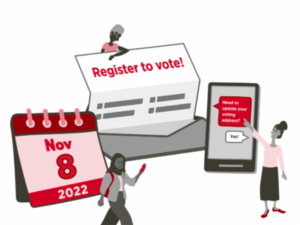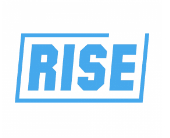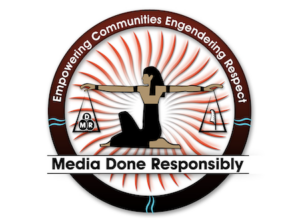
Interview with Julian Walker (PushBlack)
PushBlack is the largest nonprofit media organization for Black Americans. PushBlack tells empowering stories about Black life and history that
Polaris is a survivor-centered, justice- and equity-driven movement to end human trafficking. Since 2007, Polaris has operated the U.S. National Human Trafficking Hotline, connecting victims and survivors to support and services, and helping communities hold traffickers accountable.
Catherine Chen of Polaris spoke with Alec Saelens on January 4, 2024. Click here to read the full interview with insights highlighted.
Alec Saelens: Can you please introduce yourself and describe the problem that your organization is tackling and how you’re responding to it?
Catherine Chen: My name is Catherine Chen. I’m the CEO at Polaris or Polaris Project. We’re based in Washington, DC, and have one specific mission: to end sex and labor trafficking and to support survivors on their journeys of freedom.
Human trafficking is a global human rights abuse and a serious crime. Globally nearly 50 million people are trapped in situations of forced labor, forced commercial sex, or forced marriage. Each year, hundreds of billions of dollars are illicitly gained by human traffickers as they steal wages and freedom from victims. In the United States, where Polaris is based and where we focus our efforts, we have connected more than 75,000 victims and survivors of sex and labor trafficking to help over the last 20 years.
Our work involves three areas. First, we focus on directly responding to what victims and survivors need through operating the National Human Trafficking Hotline, which we’ve run for 16 years. It operates 24 hours a day, 7 days a week, and 365 days a year. We also provide direct cash assistance; we run one of the first guaranteed basic income programs for trafficking survivors. It’s an 18-month program designed to help survivors gain some economic stability and find the time and space to heal.
We also do work in research and intelligence. We hold the largest dataset on human trafficking experiences in North America; it’s second only behind the United Nations. Because trafficking is something that often captures the worst imaginations of people — how somebody ends up in a trafficking situation or what happens to them when they’re in a trafficking situation — we think it’s really important to tell a data-centered, truthful, and evidence-based understanding of what trafficking actually looks like, how it changes, who’s doing it, and where people are vulnerable. That’s what the data and research allows us to do.
Finally, we focus on campaigns and advocacy. We’re never going to stop trafficking unless we actually change the systems that allow for it to happen in the first place. We incorporate our data into our campaigns and advocacy in order to push for everything from big narrative shifts that educate the public on what’s causing trafficking and what makes people vulnerable, all the way to advocating for changes to specific laws, policies, and rules at the federal and state levels.
Alec Saelens: Who are the main beneficiaries of your work? How do they benefit from your work?
Catherine Chen: We don’t really use a beneficiary orientation; instead we have key stakeholders and partners to make change. Who are we holding ourselves accountable to? That’s a pretty broad range of people.
First and foremost, we partner with trafficking survivors. Survivors are the true experts on human trafficking, and they are the future of the anti-trafficking movement. We’ve been able to directly assist more than 75,000 victims and survivors by getting them connected to the kind of help that they need. That help includes matching them to service providers and local resources to help them with emergency housing, legal support, mental and substance use support, etc. We work as the backbone behind a network of about 3,100 different organizations, from survivor-led organizations to immigrant rights groups all the way through to law enforcement entities, depending on what help people are looking for.
Second, we think about those who are trusted by victims and survivors: family, friends, coworkers, teachers, frontline responders, hospital personnel. There are also the service providers or case managers — those who work directly with trafficking victims to assist them in getting the help they need. Usually it’s those people in their life who know they’re in trouble and are looking for ways to get them out of that situation or get them to safety.
From there, there’s also the larger set of folks that trafficking survivors and victims come across: law enforcement, government at all levels, Department of Justice, Department of Homeland Security, Department of Labor, all the folks who are doing both regulatory controls as well as law enforcement.
Third, we work very closely with the media. That ranges from connections for when there’s a breaking story to working with investigative journalists for in-depth coverage. We help them understand what the issues are, point them towards meaningful data sets, help them interpret situations, and provide technical assistance behind the scenes. We’ve been focused on working with Spanish-language media; there’s a dearth of folks able to educate in Spanish about both labor and sex trafficking — especially to combat a lot of misinformation about smuggling versus trafficking.
Fourth, we work with industry leaders to address trafficking in their operations, on their platforms, and through their supply chains.
Lastly, our biggest constituency is really the public. Our work relies on the public: educating them to be responsible consumers by being aware of forced labor and reducing vulnerabilities in communities by identifying potential trafficking situations. A fair amount of our work is focused on making sure that the public has an accurate understanding of what trafficking actually means, what it looks like, and how to help.
Alec Saelens: What makes your approach distinctive? You mentioned that you’re an umbrella organization that works with several thousand organizations that are concerned with issues of trafficking, but what makes you distinct to other organizations that are in this space?
Catherine Chen: I wouldn’t say it’s a single project, necessarily, but it’s our overall strategic approach, the learning opportunities we have, and our influence in the field that make us unique. At the core of those assets is our work with the Hotline: It’s not only connecting people to services that they need, but it’s allowed us to build data and analytics around what trafficking actually looks like in order to drive systemic change.
Let me give you an example. Besides connecting Hotline callers to services, we often help them understand if they’re in a trafficking situation or not. That process has given us insight and helped us understand what the reality is for people on the ground, and how that doesn’t always match up with the ways that the trafficking field itself defines human trafficking.
After 10 years of gathering this data, in 2018, we were able to release the first-of-its-kind typology for trafficking. We categorized 25 types of sex and labor trafficking based on real-world situations that we encountered through the Hotline. We were able to differentiate between an escort service and someone trapped in a massage parlor, differentiate between a child forced to beg and a child forced into child labor, and many others. While they’re all still forms of sex and labor trafficking, they look very different; they also affect different communities and change over time. That typology has helped shape the ways that the US anti-trafficking movement understands where interventions need to happen and how to tackle these sub-areas geographically or within industries.
But our impact didn’t stop there. After we released the report, we got calls from people who were formerly incarcerated, who told us we were missing a 26th type: forced prison labor. In learning that, we started to investigate whether those circumstances rise to the definition of human trafficking. And now, there are many organizations working to expand our understanding on that issue. We’ve discovered situations where those who are incarcerated were threatened with solitary confinement unless they worked. That’s a forced labor situation; it’s coercive labor. That can definitely fall under the definition of human trafficking.
That’s just one example of how these technical situations arise in our conversations with those who’ve experienced trafficking and other stakeholders. We don’t just have academic or conceptual ideas of the issues. Because of that, we’re able to keep on the leading edge of how trafficking is understood, and it helps us make sure that the response is meaningful. As evolutions happen, we’re able to shift social service providers and other partners to where they’re needed. And we can be real-time advocates for how the field needs to evolve.
Given our position, we also have to translate our evolving understanding back to the public, which presents unique opportunities and challenges. The Hotline is a national resource that runs 24/7 and is posted in almost every airport in the country, as well as bus stops, hotels, and billboards. It’s a well-known resource that gets published everywhere, especially online. People’s involvement in sharing it is the most useful and most galvanizing thing in terms of creating systems change.
But a complicated — and at times frustrating — limitation for us is that we don’t control promotional messaging about the Hotline, particularly when and why to call. Because we can’t tell folks specifically what to write to accompany it, we have had a lot of people calling — particularly during COVID — about needs that were not human trafficking related. So it’s important for us to make sure that folks understand exactly what we do and what trafficking is. We’re better able to help when others understand what kinds of issues we can and cannot support.
Alec Saelens: Could you talk about how you measure success for your work and what is the type of evidence you collect to understand whether you’re making progress?
Catherine Chen: One of the hard things about a 24-hour operation is that you never really get a chance to stop and assess or revamp everything from soup to nuts, beginning to end. We’re in the middle of an evolution around how to measure our own success. It used to be primarily operational: how many calls we are taking, how long is the wait, how many referrals we’re making, how many situations of trafficking we are identifying.
That is still continuing to happen, but we’re pushing ourselves to focus on the proportion of the calls that are actually trafficking victims themselves: someone currently stuck in their situation, someone who’s just gotten out of their situation, someone who’s been out of the situation for a long time, etc. We want to understand the ways in which our services can be better targeted to vulnerable communities.
We’re also looking at how systems are changing, which is very much a work in progress for us. There aren’t many quantifiable metrics on systems change, but we’ve tried to make progress by identifying patterns and determining what targeted interventions could result in change. If we can figure out which haystacks to look into, we can find the needle that could create significant changes.
Again, an example of success: Back in 2019, we released a big report that looked at the number of labor trafficking victims in agriculture. That has helped us see where there is the most trafficking happening and how it’s being defined. We also realized that a lot of labor trafficking victims calling us on the Hotline had a certain agricultural visa that allowed them to legally come into the United States. We started polling and gathering information from workers who are here in the US as well as workers who are coming from Mexico to better understand the average recruitment process. We took that information and figured out which dimensions of the system within the Department of Labor and Department of Homeland Security were creating vulnerabilities — things like the lack of protections against deportation if workers reported exploitation, for instance. We began doing advocacy work both in coalition and directly with government agencies to show them that by closing a particular loophole, a particular gap, they could see a reduction in trafficking. This past year, both the Department of Labor and Department of Homeland Security passed new regulations addressing some of those gaps — a milestone that illustrates our progress.
Alec Saelens: What are the specific challenges that you have faced that you’ve been able to overcome, or that you’re currently facing that you’re working to overcome?
Catherine Chen: We’re both a survivor-centered organization, but also technology enabled. So a big challenge for us has involved how to keep up with technological advances that are happening very, very rapidly these days, while protecting and empowering the people we serve.
Right now, we’re deploying artificial intelligence against data sets that we have, but we cannot afford an AI engineer; we can’t afford a data scientist. We can’t afford a lot of those things. But it’s imperative that we have that expertise, alongside our team’s deep understanding of trafficking and invaluable input from survivors themselves.
Something that we’ve been doing lately is intentionally building either pro bono or nearly free partnerships with technology companies. Rounded out with philanthropic support, that allows us to go after best-in-class technology. We clearly define a discrete problem and identify necessary skill sets, then bring that to technology companies to help us develop a product or process to do our work better. These companies can help us get to the end result, while we teach their folks about the ethics and complexities of our work.
We do that in an iterative way. It’s not a one-time thing. We build deep partnerships with technology companies so that we can go back to them from time to time — both in terms of product evolution and training their personnel.
Alec Saelens: Can you share an example of what this work, especially one of these partnerships, has looked like?
Catherine Chen: We’ve been working with Palantir for a very, very long time, and had quite a lot of success. They’ve really allowed us to develop the responsiveness of the data sets we have, and they’ve helped us organize all the information that’s necessary in order to operate the Hotline. We also have a strong partnership with Amazon Web Services in terms of cloud credits and things like that. Put together, those two companies enable us to get a lot of what we need in order to keep moving.
Also, we’ve always had aspirations to partner with universities, and we’re starting to see some traction there now. AI is now so ubiquitous as a discipline, and we’re approaching potential partners with the unique opportunity to help us figure out how to process data faster and reduce trauma by reducing human exposure to some of the worst situations over and over again. AI could also really help us process information that is true and real, and filter out things that are not necessarily about trafficking.
Alec Saelens: What do you think is needed from other actors in this space to advance systems level change?
Catherine Chen: It’s really about being able to get out of silos. It’s not necessarily a critique. We all have to prioritize and create boundaries. We all have our ideas about what is inside and what is outside of the work that we do, but one of the things that many of us who work on the frontlines know is that for the person we are trying to serve, there aren’t really boundaries in terms of their needs.
Some foundations focus on women and girls, local issues, LGBTQ youth, housing and homelessness, or democracy and racial justice. Except the person who is a human trafficking victim may identify with or have experienced every single one of those things, and the services we’re trying to get for them involve every single one of those things.
When we have conversations with some funders and partners, they say that they “don’t really work on human trafficking.” Our challenge has been to show that trafficking is an outcome of all the other systems that are broken. It’s its own field, but it doesn’t happen without the failure of other systems. It cannot be fixed without those other systems involved.
Alec Saelens: Could you share any insights or teachable lessons from the work that speak to your capacity to advance systems level change?
Catherine Chen: One of the biggest lessons is orienting our organization towards systems change. The anti-trafficking field can be a bit of an insular space. We need to understand that if a health system is not functioning well, it’s guaranteed that human trafficking response is also not going well; if the foster care system is broken, the human trafficking situation is going to be worse; if there’s inflation or an election goes a particular way, human trafficking will be affected.
We need to get everyone in the organization to think openly and curiously about what’s happening in the world and the ways it impacts what they do on a day-to-day basis. We’ve introduced systems mapping and analysis tools as a hard skill, but my own practice — that I encourage the staff to do as well — is to read far, wide, and broad, and to bring what we learn into the organization wherever we can.
We work pretty hard to find diverse perspectives and experiences to bring them into the organization. We want to create — although we don’t do it perfectly, of course — an environment in which those opinions are valid because it helps us think much more broadly about where the solutions might be.
Another really important thing is to have systems-change funders in your corner. Many organizations have a mix of donors that are individuals, industry, corporations, government, and foundations. Most government or individual funders are looking for very specific things to happen. That doesn’t necessarily give you space to change systems; so, finding foundation partners and other funders who are interested in systems change is an important dimension of the kind of support you need to be able to do this kind of work. It makes a difference when funders are being thoughtful about how they allocate resources so that it leaves space for innovation and creativity.
And once you have systems-change funders in your corner, it’s important to prioritize flexibility with internal management of resources as well. Most nonprofits go on restricted money operations, but we try pretty hard to leave a pot of money that is flexible to use for new ideas, new approaches, new stuff that’s coming out. We can’t tackle systems if we don’t.
Alec Saelens: Catherine, thank you for talking with me today.
Click here to read the full interview with insights highlighted.
Alec Saelens is a former journalist who supports SJN and its partners track solutions journalism’s impact on society and the industry. In his former role, he researched and consulted on the connection between solutions journalism and revenue. He is co-founder of The Bristol Cable, the UK’s pioneering local media cooperative. Before SJN, he was a researcher and coach for the Membership Puzzle Project and an analyst for NewsGuard.
* This interview has been edited and condensed.
Learn about other organizations creating social change to end human trafficking.


PushBlack is the largest nonprofit media organization for Black Americans. PushBlack tells empowering stories about Black life and history that

BudgIT is a Nigerian civic organization that uses technology to increase citizen engagement with government institutions to facilitate societal change.

Democracy Works has a suite of programs that make it easier to vote. TurboVote helps its 7 million subscribers easily

Rise trains young people to use their voices and lived experiences to build students’ political power and make college more

Sesame Workshop India provides a home based education early foundation in learning, health and socio-emotional skills for children and families.

Media Done Responsibly is helping young people understand the media they consume, including the harm of disinformation and stigmatizing narratives